
| Commissions |
| Artists' Studios |
| Guest Curators |
Spotlight |
|Events |
| mcdonald | crawford | swipe | ikatun | magruder | kennedy |
| sodeoka | golan | skibell | horvath | lacook | liu | ludin |
| wardrip-fruin1 | mtaa | wardrip-fruin2 | catanese | polli | ghani |

by Jillian Mcdonald
with funds from the Jerome Foundation
Stand By Your Guns confronts us with the ubiquity of guns and how violent simulations translate into real life shootings. It is an absurdist piece that both glorifies the weapon and masquerades as an entertainment arcade. [Needs Flash 6.0+ and Speakers/Headphones]
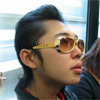
by David Crawford
with funds from the LEF Foundation
Crawford's Stop Motion Studies are experimental documentaries that chronicle his interaction with subway passengers in cities around the world. His goal is to create an international character study based on the aspects of identity that emerge. SMS-Tokyo was shot in Japan. [Needs Netscape or Explorer 5.0+ & Flash 6.0+]
Read /1/interview >>
Read /2/interview >>
Read an essay >>
Read a review >>
by Beatriz da Costa, Jamie Schulte, and Brooke Singer
with funds from the Jerome Foundation
The SWIPE Toolkit is a collection of web-based tools that shed light on personal data collection and usage practices in the United States. The tools demonstrate the value of personal information on the open market and enable people to access information encoded on a driver's license or stored in some of the many commercial data warehouses. [Needs Flash player]
Read a review >>
Listen to an interview >>
Net Art News >>
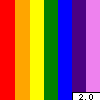
by iKatun
with funds from the LEF Foundation
By aiming for a farcical goal (improving Newton's Color spectrum by adding more of the same colors) and using absurd methodologies (mapping colors to Instant Messaging conversations), /reimaginings/ provokes the visitor to question the veracity of data-mapping, hyperlinking and scientific rhetoric by being constantly perched at the edge of language, graphic and technological seduction and an uneasy sense that the project is incomprehensibly complex and ridiculous. [Needs Flash 6.0, IE 6+, Mozilla 1+, Netscape 7+, Speakers/Headphones]
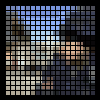
by Michael Takeo Magruder
with funds from the National Endowment for the Arts
<event> re-presents 31 news items, compelling the user to "reflect upon the minute isolated occurrences of which history in an empirical sense is composed." As with his earlier works, Magruder is concerned with media saturation and its subsequent devaluation of information; copyright— who actually owns the information, the event that triggered it, the history it becomes?; is it the 'truth? [Needs Flash 6.0 and Speakers/Headphones]
Read a review >>
Read a review >>
Read a review >>
Net Art News >>

by Shannon Kennedy
with funds from the City of New York Department
of Cultural Affairs and the Jerome Foundation
MyDoom source code has been mapped and systematically "infected" with sections of source code from other prominent computer virii creating a series of shifting visual relationships. Based on the principles of genetic engineering — which attempt to turn off or on specific biological behaviors by inserting new genes or deleting sections of old ones — Infecter puts into motion an experiment with no hypothesis. The visual properties that emerge are based not on what we program them to do but on the interactions of language itself. [Needs Flash 6.0]
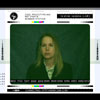
by Yoshi Sodeoka
with funds from The Greenwall Foundation
Prototype #44 is a short-wave radio "number" station broadcasting over the internet. Enter and you will hear random web-generated number sequences read aloud by prerecorded video host personalities. Calming and trancelike—in a droning and vaguely threatening way—Prototype #44 was inspired by the many "Spy Numbers Stations" that sprang up in intelligence communities around the globe in the 1960s. [Needs Flash 6.0 and Speakers/Headphone]
Read a review >>
Net Art News >>
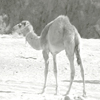
by Doron Golan
with funds from the Jerome Foundation
The9th-Allegro is a documentary portrait of Reb. Dan Harpe, a Hasidic Jew. Shot in Israel and the Sinai desert, The9th-Allegro uses the vocabulary of 'cinema vérité' and attempts to fuse divergent cultural imagery. The movie's soundtrack is the first movement — Allegro — of Beethoven's 9th Symphony. [needs Quicktime Player and broadband connection with Speakers/Headphones]
Read an interview >>
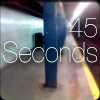
by Harris Skibell, with Shaque
with funds from The Greenwall Foundation
45 Seconds is a collection of discrete, explicitly timed experiences or happenings, each with a clear beginning and endpoint, presented in an interface with video, graphics and sound. It explores the perception of time duration and attention in chunked, timed and labeled experience. [Needs Flash plugin and Speakers/Headphones]
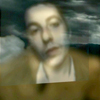
by Peter Horvath
with funds from the National Endowment for the Arts
Intervals explores a series of characters whose investigation of self and identity unfold and elide through a sequence of cinematic interludes. At once seductive and illusive, these portraits expose their most intimate selves through accounts of lost innocence, fear of the unknown, masculine ritual and the mystery of love. Horvath's innovative use of pop-up windows creates a virtual collage that posits identity as a series of random 'memory acts' that accumulate into a slowly revealing narrative. [Needs Quicktime Player, Speakers/Headphones, and high bandwidth]
Read a review >>
Net Art News >>

by Lewis LaCook
with funds from the National Endowment for the Arts
tone row poetry is an algorithmically mediated synaesthesia. Inspired by 20th century composer Arnold Schoenberg's serialist music, the work matches the English alphabet with tones from the chromatic western scale. Every letter is a note, and a few are several. Add to this electric guitar, digital waveform synthesizer coloring, and some wildcard events, all performed by LaCook, and tone row poetry becomes a writing machine that is also an alien orchestra. [Needs Speakers/Headphones]

by Victor Liu
with funds from the Greenwall Foundation
Tap Evol is a customized video player tapped into a database of video clips. Fragments of video from the database are mixed in real-time, generating an ever-changing stream of limitless duration. The selection of source video presented here — The Setup — is drawn from the genres of computer game cutscenes and television commercials. The mini-narratives and situations from these clips are broken apart and fed into the software engine, producing an aura of intrigue and unresolved purpose. [Needs Java and broadband connection]
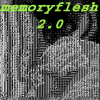
by Diane Ludin
with funds from the Jerome Foundation
Memoryflesh 2.0 is an assemblage of media montages — driven by live "fake suturing" performances — that tells a variety of stories about the human genome's emergence as a voice of scientific authority. The project's purpose is to generate a concrete, bodily response to this disembodied, public process. Ludin's fake suture assembly sessions will be broadcast via streaming audio and video, and then archived with the online database of collected source material. Stay tuned for future performances. [Needs Java, RealAudio and Quicktime Players, and Speakers/Headphones]
Net Art News >>
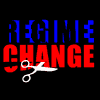
by Noah Wardrip-Fruin
with Brion Moss, David Durand, and Elaine Froehlich
with funds from the LEF Foundation
Textual instruments make text "playable" and become tools for textual performance. Regime Change begins with a news article from April 2003, following the bombardment that began the U.S. invasion of Iraq. George W. Bush cites "eyewitness" intelligence that Saddam Hussein was assassinated by targeted U.S. bombing, and clings to the contention that the Iraqi president was hiding "weapons of mass destruction." Playing Regime Change brings forth texts generated from a document that records a different U.S. attitude toward presidential assassination and eyewitness intelligence — the report of the Warren Commission.
Net Art News >>
Read an interview >>
Read a paper >>
Read an essay >>
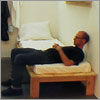
by MTAA
with funds from theJerome Foundation
"We shall seal images of ourselves in images of our studio, seemingly in solitary confinement inside seemingly identical images of cell-like rooms measuring 10ft x 10ft x 10ft. We seemingly shall not converse, listen to the radio or watch television, until — after you have viewed them for one year — we unseal our images." 1 year performance video continues MTAA's series of Updates that resound seminal performance art from the 60s and 70s, in part by replacing human processes with computer processes. [Needs latest Flash Player and broadband connection for one year]
Read a 1/review >>
Read a 2/review >>
Read a 3/review >>
Read a 4/review >>
Net Art News >>

by Noah Wardrip-Fruin
with Brion Moss, David Durand, and Elaine Froehlich
with funds from the LEF Foundation
Textual instruments make text "playable" and become tools for textual performance. News Reader is software for reading and playing the network news environment. Initially, it offers the current "top stories" from Yahoo! News which are always drawn from mainstream sources. Playing these stories brings forth texts generated from alternative press stories, portions of which are introduced (through interaction) into the starting texts, gradually altering them. News Reader is an artwork designed for daily use, providing a sometimes humorous, sometimes disturbing experience of our news and the chains of language that run through it.
Read a 1/review >> [in Italian]
An English translation may be found here
Net Art News >>
Read an interview >>
Read a paper >>
Read an essay >>

by Paul Catanese
with funds from the National Endowment for the Arts
In Collective Geology of the Erased Space, viewers are presented with an imaginary strata formed from those lost spaces between sites, machines, addresses and links as if they had collapsed upon themselves. This strata is imbued with fragments of conversations, recollections, errant sounds and pregnant silences as if the memory of communication had imparted itself on the strata in some way. Stretched thin like the surface of a balloon, underneath the razor sharp cursor these sounds whistle like a fingernail across the surface of a drum-head. [Needs Shockwave plugin, Speakers/Headphones, and a fast connection]
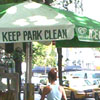
by Andrea Polli
with funds from the Greenwall Foundation
According to the Metropolitan East Coast Assessment, average temperatures in New York could increase by one to four degrees fahrenheit by 2030, and up to ten degrees by 2100. Heat and the Heartbeat of the City is a series of sonifications that illustrate the dramatic impact these changes will have on Central Park, the heart of New York City and one of the first climate monitoring locations. As you listen to the compositions, you will travel forward in time at an accelerated pace and experience an intensification of heat in sound. [Needs Quicktime and Flash plugins, Speakers/Headphones]
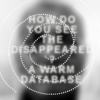
A Warm Database
by Mariam Ghani
with funds from the New York City Department of Cultural Affairs
and the Jerome Foundation
How Do You See the Disappeared? A Warm Database investigates immigrants who disappear into the complex, bewildering, and often heartless bureaucracy that governs the immigration courts, detention centers, asylum adjudications, and deportation proceedings that separate hundreds of thousands of new Americans each year from their everyday lives, family ties, and points of connection. [Needs Flash and Quicktime players, scripting and popups enabled, Speakers/Headphones]
Published in Sarai Reader 05 >> [PDF]
Read an article >>
Read a review >>
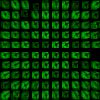
by M. Takeo Magruder
{matrix} is a series of audio/visual "information" sculptures. Each sculpture was created from a single news item parsed from the BBC International web site on January 8, 2004. Three thousand bits of text, image, and sound were sampled to generate each sculptural form. Although the original audio/visual entities are unintelligible, it is possible to reverse engineer the works and extract the 3000 bit elements in a lossless manner. [Needs the Cortona Plug-in and Speakers/Headphones]
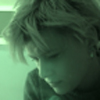
by Jess Loseby
Views from the Ground Floor is a networked installation that presents the view of a pixilated domestic landscape which seems utopian in one scene, but appears constricted and full of suppressed fears and desires in another. Loseby draws unexpected and compelling comparisons between female domesticity and cyber-culture, where low and high technology live side-by-side in an uneasy partnership of repetition, interaction and consequences. Her positioning in a wheelchair means these visions are always viewed from the ground floor. [Needs Flash 6 plug-in, Soundcard & Speaker/Headphones, and Explorer 5+]
Read a review >>

verbs: find, swerve, drift
nouns: systems, instructions, infinities, software, everyday, dimensions, data, world, earth, loopholes, trap doors, dumb waiters, outside, other side, anyside
adjectives: social, public, urban, found
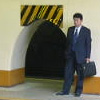
by David Crawford
In this remix of footage originally shot for previous installments in London, Paris, Boston, New York, and Tokyo, each installment's modular structure has provided a library of building blocks that have been edited into a linear animation approximately 5 minutes long. The algorithmic montage constituting each clip's DNA remains intact, while the individual sequences are now composited within a linear framework. The speed of the transitions is based on network connection speed. [Needs a broadband connection and the following free software: Netscape or Explorer 5.0+ & Flash 6.0+]
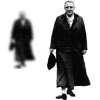
Maria Miranda and Norie Neumark
The Museum of Rumour is a 'fictive' work that presents ongoing 'pataphysical' research into the study of rumor. It is a sort of 'gay science' of multiple and contrary theories — from the physics of motion to the theory of six degrees of separation—in this case from Gertrude Stein, a major figure of rumor. Other fictive works in the Studio are The Perpetual Emotion Project, an investigation of emotions as relays and vibrations (according to Superstring Theory, emotions are the fifth force — after gravity); and Journey to the C/enter, a series of field logs (flogs) collecting evidence of Jules Verne's rumored journey to the Antipodes. [Needs Flash and Quicktime players and Speaker/Headphones]
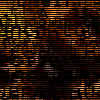
by Michael Takeo Magruder
According to witnesses and U.S. officials, four American 'civilians' were ambushed and shot or beaten to death by Iraqi insurgents. The desecration of the victims' bodies was filmed in its entirety by an Associated Press camera crew. The coverage of the event was highly censored on all international media networks. The work is not intended as a discourse on the axiom of 'the evil nature of war'. It is merely a consideration of an event we have (or have not) witnessed and a reflection on the iconic nature of conflict in the new millennium. [Needs Flash 6+ plugin and mono audio]
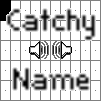
by Andy Deck
Ways of mixing and composing audio within the Web browser have been catching on recently. While there are many differences between traditional instruments and software interfaces, between bands and anonymous collaboration via bandwidth, and between live music and streaming data, the works featured in Catchy Name demonstrate that software can have "an intelligible and accessible character (that) calls forth skilled and active human engagement" (Albert Borgmann). [Needs Speakers/Headphones]

low-fi's curatorial project was embedded within our homepage. Its editorial and guest content was dynamically updated so that it always reflected low-fi's current information. Their contribution focused on structuring information in a condensed format so that it could be inserted into other sites. This was a prototype. It no longer functions.
| ascii bush | loseby | ajaykumar | wattenberg | andrews |
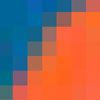
by Eduardo Navas
Re_Cycled_Views deals with the recycling of information that is common in both contemporary art practice and the mass media, and exposes the tendency of individuals to get lost in information as abstraction and their subsequent failure to achieve real understanding. Navas appropriates critical writings from Net Art Review and recontextualizes them by focusing on art practice as criticism.

by criticalartware
liken stores criticalartware's growing database of information, resources and discourse as a collection of self-connecting nodes that anyone can add to or comment on. The pathways connecting these nodes slowly change based on use; more popular paths grow stronger, while weaker paths fade away. these relationships are also described in a public XML file, making it possible for anyone to develop alternate interfaces to (or interpretations of) liken's unique and ever-changing content and structure.
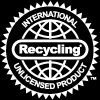
by bn™ Gaulon
digitalrecycling aims to build a community of people who use discarded information as their medium. Users may log on to the "digitalrecycling operating system" and either upload or download their own or other peoples' digital trash. "The point is not to deny privacy, but to rethink property." What one person thinks is useless another person may find useful. So, before emptying your trash bin consider sharing. digitalrecycling also contains a series of Quicktime movies including rehearsals and jam sessions. [Needs Flash, Quicktime and MP3 players]

by Danielle DaCosta
Influences.org is a non-profit educational website highlighting the historic individuals who defined new media by the creation and exploration of innovative concepts, philosophies, projects, and processes. The project aims to present new media innovation in the context of cross-disciplinary connections, collaborations, conceptual characteristics, medium/genre and timeline. Influences.org needs YOU, the community, to provide feedback and contemporary projects. [Needs Flash MX plugin and a 1024x768 screen resolution]

by Yoshi Sodeoka
ASCII BUSH is an ascii video rendition of two State of the Union addresses — one delivered by George W. Bush on January 12, 2003 (just before the Iraq war); the other by his father, George H.W. Bush, on March 6, 1991 (right after Operation Desert Storm). The goal of the project is to find some artistic meaning in the dreadful and painfully long US presidents' speeches, and to investigate the idea of recycling and making art out of the debris of our culture. The speeches are not edited; they are just digitally filtered and also very long. ASCII BUSH is definitely boring enough to be interesting!!! [Needs Speakers/Headphones, best in Internet Explorer]
Net Art News >>
![[a net.film] logo](../spotlight/loseby/PP_thumbnail.jpg)
by jess loseby
David Crawford's "SMS" creates the narrative of the momentary encounter and this work was created to be its distorted mirror. Personal snapshots harvested through keywords by Google have been removed from context and (using basic digital manipulation) new narratives imposed on the moments captured. The progression of the film rocks the viewer gently through two augmented perspectives in a series of 20 images. The people and places are unknown but an intimacy is fabricated and connections between unrelated incidents made. [Needs IE 6+, Flash 7 plug-in]
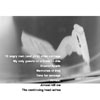
by ajaykumar
Drawing on medical evidence and the artists' own experiences of mental health issues, pages of madness provides an experimental response to this phenomenon, exploring the psyche of a mentally ill person through the use of textual interplays, sound, and photographic and video images. It includes reconceptions of concrete poetry and the ciné-roman, investigations in narrative space and construction, and explorations of the contemporary notions of cyberspace and Asian ideas of void.

by Martin Wattenberg (with Marek Walczak)
Thinking Machine 4 explores the invisible, elusive nature of thought. It's artificial intelligence program, or 'thought process', is mapped on screen as it plays the user, making visible the traces of literally thousands of possible futures as the program tries to decide its best move. The traces become a key to the invisible lines of force as well as a window into the spirit of a thinking machine. Unlike the rushed tempo of popular video games, the pace of interaction is deliberative. Indeed the true subject of the piece is not games or chess, but contemplation and introspection.
Read a review >>
by Jim Andrews
Portuguese translation by Marcus Bastos
On Lionel Kearns is a look back at a forward-looking poet. It explores the sixties-through-eighties pioneering work of proto-digital Vancouver poet Lionel Kearns. Kearns's work in text, visual poems, and animated poetry videos is combined with Andrews's interactive visual programming; the result crosses borders between the digital poem, the documentary and the essay, and re-programs the literary hypertext of net.art. [Needs Shockwave and Quicktime plugins]
Read a review >>
with funds from Emerson College
Spring 2004: The first speaker series — created and presented by Turbulence and Emerson College, Boston — examined some of the current critical areas being explored by net-based artists: interactivity, visualization, Internet protocol, software art, generative art, mapping, and games. The series considered contemporary theoretical and conceptual issues in net art, challenging notions of the art object, the artist and the audience. Presenters were Steve Dietz, Christiane Paul, John Klima, Alex Galloway, Mary Flanagan, Natalie Bookchin, and Cathy Davies.
